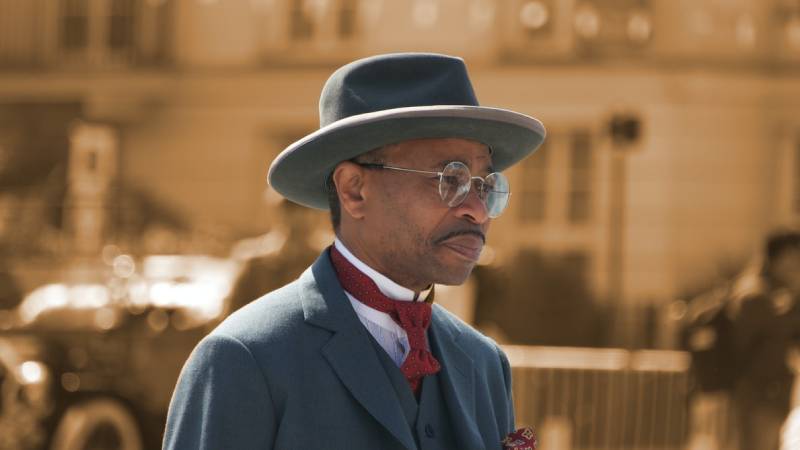men’s top hats the top hat was indeed a pillar of Victorian society across the 19th century: a gentleman with a topper was very well, reputable, and a gentleman of work. However, the top hat is now merely a parody of the entire half status it originally symbolized. Its origins may be traced back to dames, squirrels, cotton, and lunacy.
The top hat is a high tubular hat with a soft base that is usually made of satin. It is blackish and features a tall peak with a short, gently rounded rim.
Hats have long remained worn for a variety of purposes, including security, prestige, and aesthetics. A hat is little more than an article of fabric; it’s a sophisticated luxury product that may express one’s individuality, business norms, and thinking style. Apart from maybe cowboy hats and contemporary coverings, the twenty-first century is a hat-free era. This may be a transitory craze, and it has the same social significance as past age fads, where people wore appropriate caps all of the time.
Hatless times have existed in civilization previously. Wigs supplanted hats in the 18th century. However, the 19th century mandated hats for gentlemen, with several notable types being recognized with regret.
A hatband, a small fraction of cloth in a darker shade that rested at the bottom of the crest, was commonly used withtop hats. The bowler hat, a broad, rigid straw fedora with a tall peak used just in the warmer months, was just another specialty headgear. The seaman hat was a variant on the trilby hat, with a narrow, flat conical head and a multiple or more extensive brim. Gentlemen can always choose a cap to complement their attire and the event because of the significant number of different hats supplied, many of which come in various colors.
What is the history of top hats?
The top hat couldn’t be a more elegant or commanding headgear in vogue. In 1797, after John Hetherington wore the very first top hat, this almost provoked a revolution. Hetherington’s initial foreign trip in the top hat sparked a brawl. He was later prosecuted for appearing on the Public Street sporting a towering structure with a gleaming shine designed to terrify the fearful.
Because sulfur was employed to transition squirrel or bunny hair to felt – called carroting because it colored the fibers pink – making a top hat was sometimes fatal for hatters. Long-term mercury consumption often resulted in heavy metal poisoning, resulting in vascular dementia and agitation, muscle aches and convulsions, visual impairment, vision, dentition, and fingernails.
Though some forms changed throughout time, including thinner brims and taller or shorter tops, the elements stayed the same. Mens top hats became enormous up to twelve inches in diameter – making it difficult for theatergoers to see them play across the bramble of the top. Thus, hat inspectors were installed at the stage and operas. The opera cap, sometimes known as the Gibus, is a foldable season fabric men’s top hats.
In the twentieth century, the top hat began to lose popularity as more informal types of headgear, including the flat cap, became approved for regular use. The top hat grew to be linked with Victorian pretentiousness and formalism and also was exclusively worn on highly ceremonial social gatherings, operas, lawn celebrations, and Races.
And for its waterproofing, crocheted beaver hair was the favored fabric for top hats. The Victorian top hat nearly killed out the rodent due to the highly significant growth for animal couture.
Are these Hats Still in Style?
These traditional, down on the ground hats have indeed been enthusiastically donned by horsemen competing in equestrian, harness racing, and mountain biking competitions since the 1912 Olympics. However, this top hat has fallen out of favor, and this will be prohibited at all major sporting events beginning in March.
It used to be a common item, then an indication of stylish refinement had managed to make this into the twenty-first century – but is now holding on by the crest.
The much more severe formal attire has its timescale. Although the moment for wearing a top hat as just a daily item has passed, you must not permit it to become obsolete. Unlike formal wear and waistcoats, a top hat is always significant, so let’s stop undervaluing it.
However, the aesthetic boomerang never stops swinging, but there may come a moment in the hereafter where we must uncover faces again. The retrospect of cultural and contemporary processes can describe why the vogue for having or not sporting a hat change throughout time.
men’s top hats are hardly sported without irony nowadays. The skill of top hat manufacturing is dwindling, with just a few hatters still in business. The top hat is usually humorous, rebellious, or ludicrous in mainstream culture, as seen on figures such as Willy Wonka, theater performers, and cyberpunk fashionistas.


